| Most of the historical buildings are well looked after
but then I suppose many of them are owned by the State at one level or
another. This is the Museum of the Restoration of the Republic. | 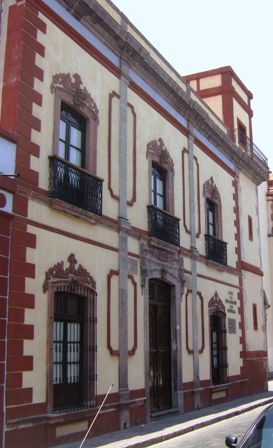 |
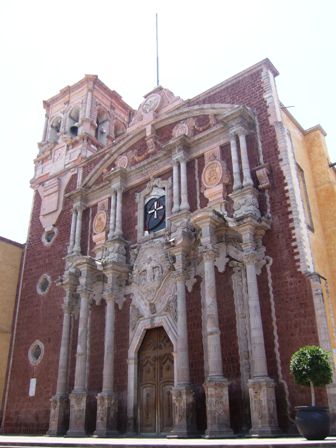 |
Many of our photographs are of churches and given that we
are not religious, this may seem a little strange. But it is just that most
of the historical buildings in this country were built by one religious
group or another. And they are spectacular buildings! This is the
Cathedral, formerly the Old Oratory of San Felipe Neri. It illustrates the
transition from Baroque to Neoclassical and the façade displays impressive
artwork to go with the fine unfinished tower and the great cupola. It was
built at the order of Pope Clement XII between 1760 and 1805. It became the
cathedral of Querétaro in 1935. Alas it was closed so we couldn't see
inside. |
| Then we found the Palacio Conin, now the offices of
the Department of Urban Development and Public Works. | 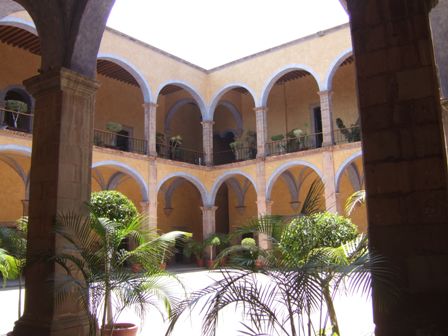 |
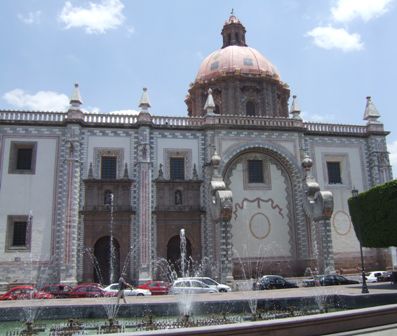 |
And so to the furthest point of our tour in this direction, the Templo de Santa
Rosa de Viterbo. Considered a masterpiece of baroque architecture, it was
built in the 18th century and is a fine example of Spanish and Mudejar
(Moorish)
style. |
| Certainly the buttresses are unlike anything we've
seen elsewhere. It is buildings like this that make the historic centre
into a World Heritage site. | 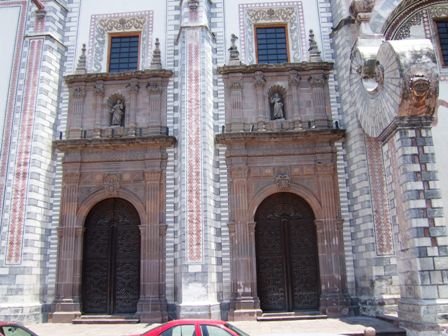 |
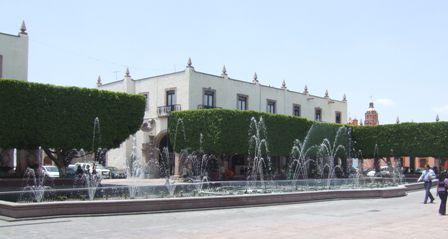 |
Opposite the temple is a garden with a large programmed fountain but it was
doing little today. |
| Walking back towards the centre we came across the
much simpler Chapel of the Holy Spirit. This was constructed in the 16th
century in the Indian neighbourhood of the city and added to in the 18th.
It is a much simpler and humbler church and to my mind is more appropriate
for a church. Maybe it is my Presbyterian and Methodist upbringing. Not
quite Calvinist! We are always surprised by how small the amount of seating
is in these churches - but then they have so many churches. | 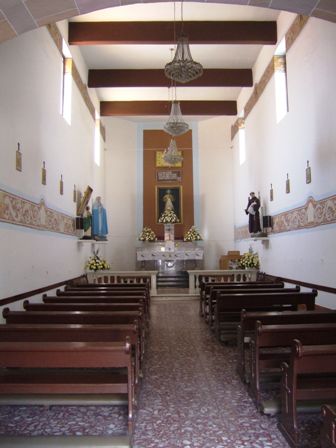 |
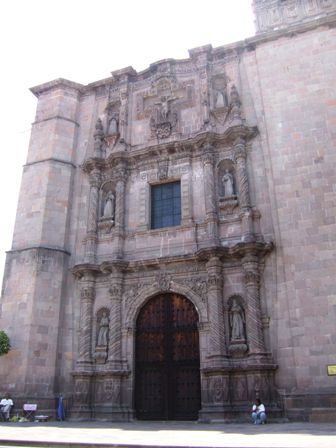 |
This is the Temple and old Convent of San Agustín. It was built in 1728 as
an Augustinian monastery. Although we could not get in to see, its courtyard
is said to be one of the most magnificent in Latin America. Since 1988 it has been an
art museum. |
| Back in the centre, this is the former Convent of San
Francisco, but it now houses the Regional Museum. | 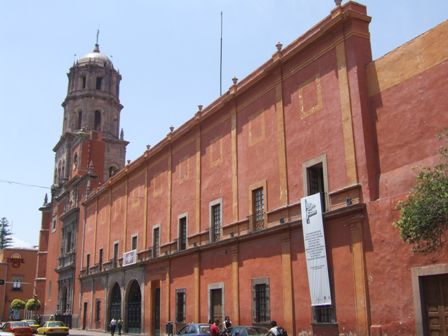 |
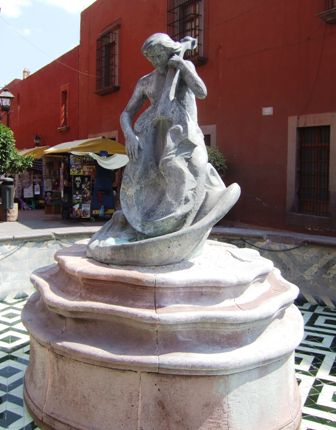 |
We wandered through the street stalls on Libertad. At
either end there are statues commemorating music. |
| We have seen statues of harpists playing instruments with strings, but this
one doesn't have any. Ethereal music I guess. | 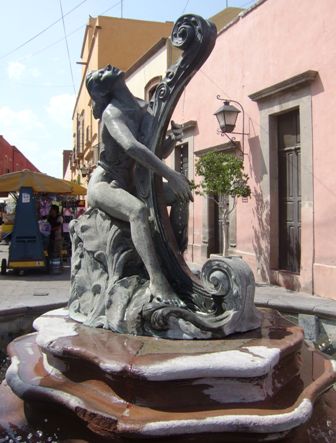 |
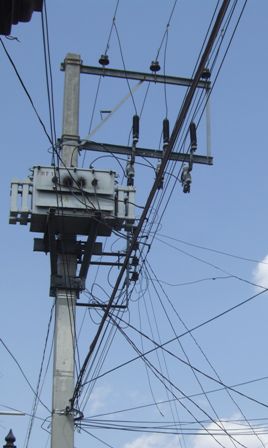 |
Just as a reminder that there are other forms of architecture, I became
aware of the tangle of wires above our heads transporting electricity at all
sorts of voltages plus telephones and who knows what else. In places it
really is a tangle with much less protection from the elements or for the
workers than we are used to. |
| Back to the churches and the Temple of La Merced and
its marvellous interior. The original chapel was built in 1736 but it was
rebuilt in 1879 although parts of the dome and tower were not finished until
quite recently (post 2000). The outside is quite plain. | 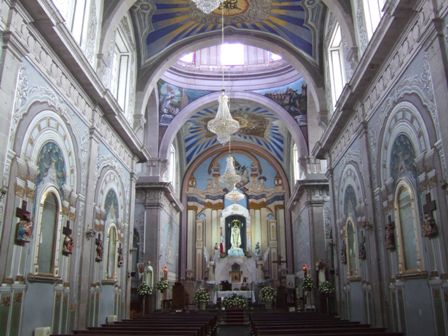 |
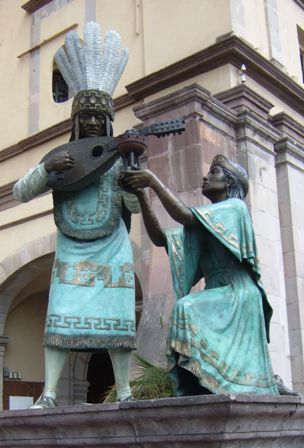 |
Heading further west we came to the Convento de la Santa Cruz. The Spanish
conquest of the city ended here in 1531. Legend has it that both the
Spaniards and the indigenous tribes saw a fiery cross in the sky. A replica
now hangs above the main altar. A service was in progress so we couldn't go
in but we did admire the statues just outside. |
| Further on we came to the mausoleum built on the site
of the city's first cemetery. The mausoleum contains the remains of Dona Josefa
Ortiz, one of the founders of Mexican Independence. Inside is a small museum
of the revolution. | 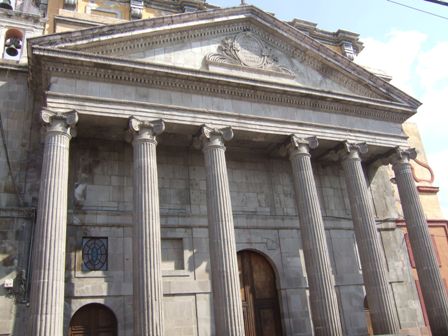 |
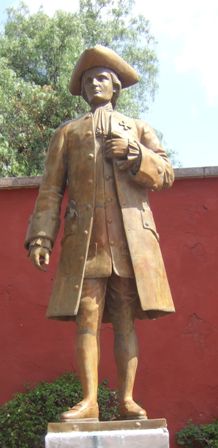 | There
are many statues of local notables around the edges. This is Don Juan Antonio de Urrutia.
There are many others in the garden but the sun was not being helpful in the late
afternoon. |
|
So to the aqueduct, a symbol of the city and the state and a remarkable
piece of engineering. It was built between 1726 and 1738 to bring water into
the city and is 4200ft long rising to 75ft on 74 sandstone arches. | 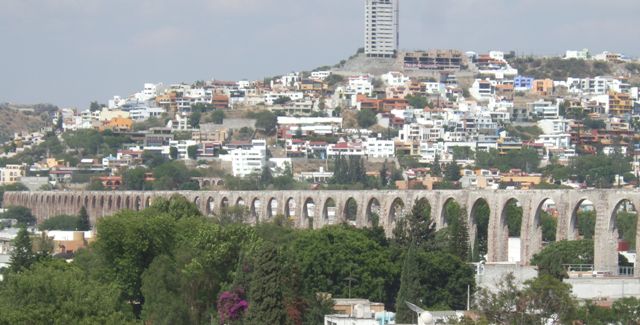 |
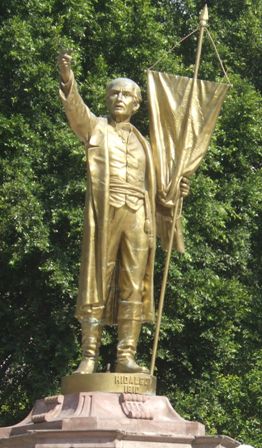 |
So we headed back to the centre to the Alameda Miguel Hidalgo. This is him
in pride of place in the centre leading the call to arms. Now the sun lights
him well. He was in shadow this morning. |
| And two more multicoloured bronzes playing and
dancing. The musician is Prof D Jose Lopes Alaves. | 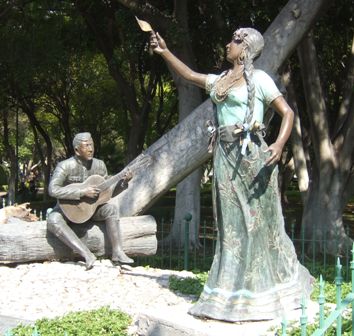 |
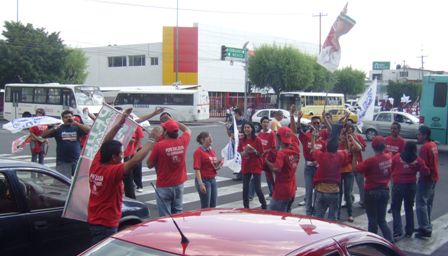 |
Election time is upon the Mexicans and two groups of students supporting
rival candidates were disrupting traffic a little. Good to see the youth
taking an interest in politics. |
| And back to the entrance to our campsite (again we are
the only occupants). Note the elephant topiary although why is beyond me, I
don't believe there were ever elephants in the Americas. | 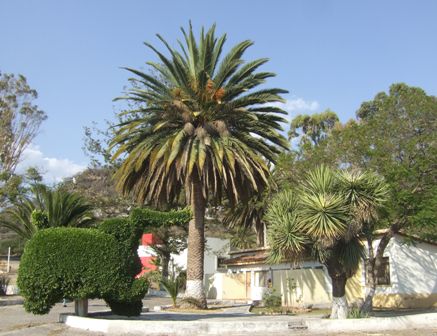 |
|